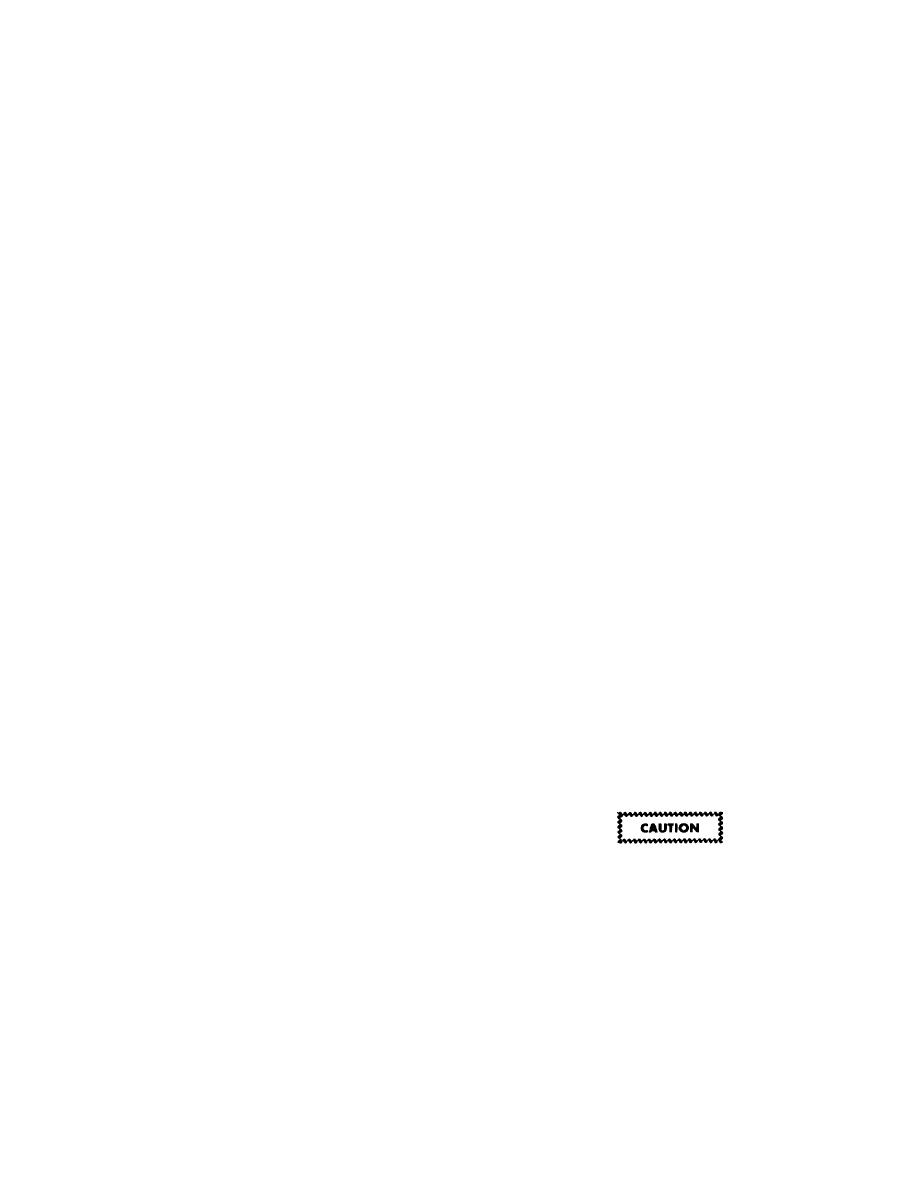 |
|||
|
|
|||
|
|
|||
| ||||||||||
|
|
 as for gears. However, the condition, if ever
b. Inspection consists of checking for defects
will in most cases be much less
present,
such as physical distortion, wear, cracks, and
When doubtful of the actual
pronounced.
pitting, and checking dimensions of parts for
s e r v i c e a b l e condition o f s p l i n e s , p e r f o r m a
compliance with maximum wear limits data. Parts
magnetic particle inspection.
subjected to heavy load or pressure shall be
inspected more thoroughly by performing surface
f. Check all hose surfaces for broken or frayed
temper, magnetic particle, or fluorescent penetrant
fabric. Check for breaks caused by sharp kinks or
procedures where necessary. Clean all parts before
rubbing against other parts of the truck. Inspect
inspection.
copper tubing lines for kinks. Inspect the fitting
threads for damage. Replace any part found
c. When removing drain plugs from transmission,
defective. Following reassembly and during initial
engine, or hydraulic system components, inspect
truck operation period, check for leaks.
the sediment adhering to the plug. Accumulations
o f grit and/or fine metal particles may indicate
g. Visually inspect all castings and weldments for
actual or potential component failure. A few fine
cracks. Parts upon which great stress is placed may
particles are normal. This inspection is effective in
be inspected further, using the magnetic particle
determining defective parts prior to internal
inspection method. Critical non-ferrous parts may
inspection of the component, and to predict
be flourescent penetrant inspected.
degradation of the equipment.
h . Inspect all harnesses for chaffed or burned
d. Gears should be inspected upon removal for
insulation. Inspect all terminal connectors for loose
the following conditions:
connections and broken parts.
1. Normal wear in excess of practical limits.
5-6. GENERAL REPAIR.
2. Pitting of teeth due to extreme pressure
a. Remove burrs from gear teeth with a fine-cut
loading.
file or hand grinder.
3 . Abrasive wear due to foreign materials in
b. Alternator slip rings and
starter commutators
lubricant.
m a y be polished in a lathe,
using a strip of 00
sandpaper. After polishing,
blow all dust and
4. Scoring, siezing, and galling of teeth due to
residue from commutator with
compressed air.
excessive loads and clearance.
c . Chassis and exterior painted parts may be
5. Burning and loss of temper due to extreme
resurfaced where paint is damaged, or where parts
high temperature operation. Caused by excessive
have been repaired, by using an abrasive disc driven
friction and lack of lubrication.
through a flexible shaft.
6 . Rolling or plastic yielding due to extreme
loads over a long period.
7. Cracks and fractures due to shock-loading.
S u i t a b l e precautions should be taken to
guard other parts of the vehicle from
Note
abrasive dust. The operation should not be
performed near exposed working parts and
If visual inspection proves the service of
all openings which would allow the dust to
gears doubtful, perform a surface temper or
reach working parts should be masked.
magnetic particle inspection, or both.
e. Inspect shaft splines for wear, pitting, rolling
d . Remove residue and oil stain from bearing
or peening, and for fatigue cracks. In many
races with crocus cloth.
instances, the same inspection procedure will apply
5-3
|
|
Privacy Statement - Press Release - Copyright Information. - Contact Us |